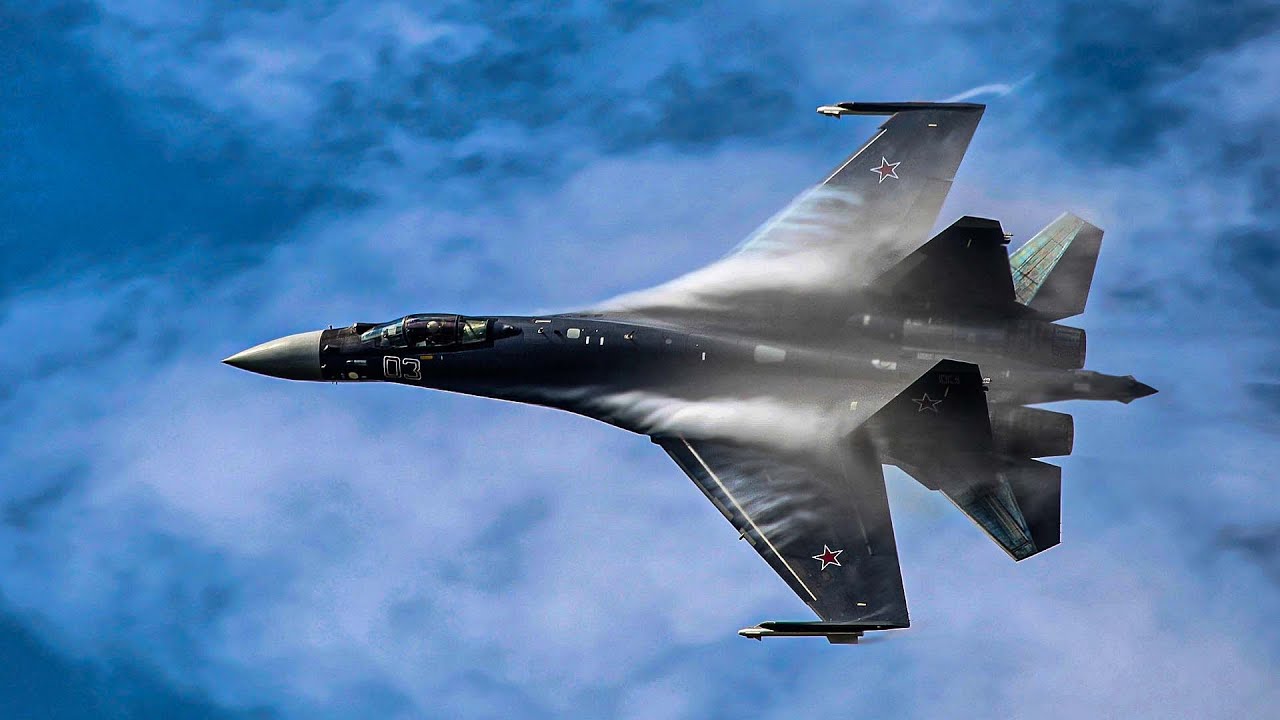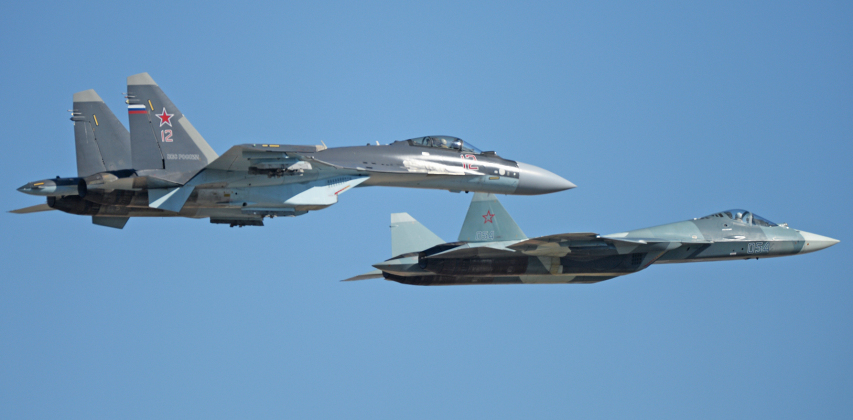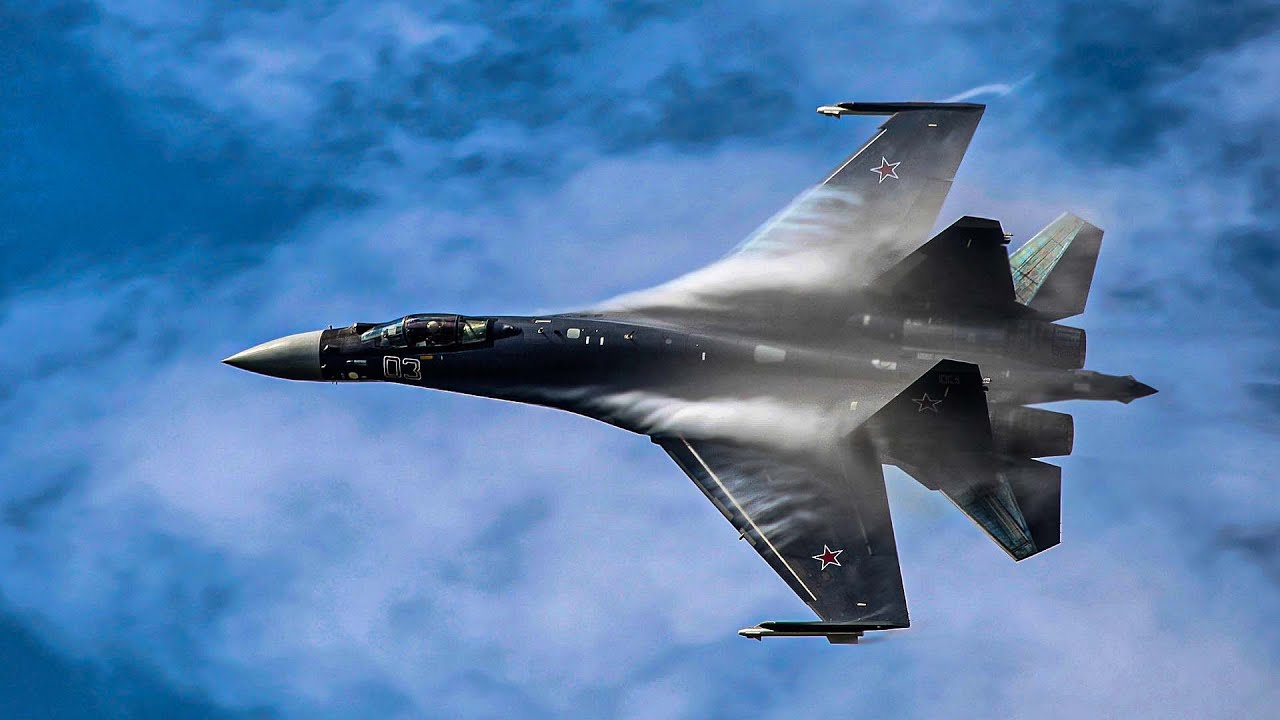Yongpeng Sun-Tastaufen
BANNED

- Joined
- Oct 15, 2017
- Messages
- 28,401
- Reaction score
- -82
- Country
- Location

Russia Adds More Heavyweight Su-35 Fighters To Its Arsenal; Kiev Critiques The Warplane For Poor Survivability
The Su-35, one of Russia's top-tier fighter jets, has had its reputation severely damaged in the Ukraine conflict. Ukrainian forces have also highlighted the Su-35's low survivability, in particular, arguing that this aircraft is inefficient and that the technology is unreliable.
 eurasiantimes.com
eurasiantimes.com
Meanwhile, on September 10, Rostec, a Russian state-owned defense conglomerate, announced that the Russian Air Force had received a new batch of Su-35S heavyweight fighters from United Aircraft Corporation. These aircraft were manufactured in the Komsomolsk-on-Amur aircraft facility (KnAAZ) in Russia’s Far East region.
The fresh batch is part of the third contract signed between the Russian Ministry of Defense and UAC for 30 aircraft. The delivery is expected to be completed in 2024.
“The Su-35S is our key product today. This is one of the best aircraft in the world. It has great potential, and its construction at our plant will continue in the future,” said the facility’s director.
The press release noted that the latest series of Su-35S were approved by the technical staff and completed factory tests at the Komsomolsk-on-Amur Aviation Plant. Each aircraft underwent a series of airborne operational tests.
Nevertheless, the country is facing challenges in exporting this aircraft to other countries. Many prospective buyers have already abandoned their plans to purchase this heavyweight aircraft due to the US sanctions levied on Russia.
Indonesia has already canceled its Su-35 order, and Egypt is expected to follow suit. Other interested parties have not moved forward with their orders. As a result, domestic orders are now the only way to maintain Su-35 production lines.

China is the largest customer of the Su-35, which acquired 24 warplanes from Moscow. But the success of its domestic defense industry’s fifth-generation J-20 and Su-27-derived J-16 fighter jets makes it unlikely to buy any additional Su-35 fighters.
However, the Iranian Air Force recently showed interest in the planes, which could help relieve some pressure and free up more production capacity for export. It remains to be seen if the deal actually goes through.
The Russian Air Force has already received more than 100 Su-35 aircraft. Meanwhile, the state-run cooperation said that the fifth generation Su-57 fighter aircraft will continue to be delivered to the Russian Air Force.
Initially, it was anticipated that the fighter would have 50 aircraft in service by 2020 and 200 by 2025. However, only a few units are currently operational, and the fleet is only anticipated to grow to 22 by 2024 and 76 by 2028.
Critics Of Su-35 Fighters
In a briefing to the Ukrainian Media Center on August 11, Brig. Gen. Oleksiy Gromov, a deputy chief to the Ukrainian General Staff, spilled some beans on the Russian aviation sector.He stated that due to the combat losses of modern aircraft, Russia was forced to use older, retired Sukhoi Su-24M bombers.
Gromov continued to criticize Sukhoi, the company that made the Su-35S twin-engine fighter jets, by asserting that only nine of the 24 Su-35S aircraft, which China had paid $2.5 billion for in 2015, had been delivered in working condition because of unspecified issues with their “onboard systems,” or avionics.
The deputy claimed that Ukrainian forces had shot down 24 Su-35s during combat. This number, however, is disputed because, as of the middle of August, visual media only reported the loss of one or maybe two Su-35s over Ukraine.

Nevertheless, it is essential to remember that the claims made by Ukraine may be nothing but a propaganda war. But, Gromov’s accusations raise other concerning developments for the Su-35, which had already experienced a handful of export agreements being canceled.
The Countering America’s Adversaries Through Sanctions Act (CAATSA), which mandates the imposition of US sanctions against any country that makes sizable military acquisitions from Russian defense corporations, may also have caused some nations to dump the Su-35s.
Reasons That Could Explain Its Poor Survivability
The Sukhoi Su-35 is a heavily upgraded version of the Su-27 fighter jet that is significantly more effective in combat against aerial, ground, and sea-surface threats. The Su-35’s design utilizes the most effective engineering principles successfully tested on the Su-27/Su-30 aircraft family.The Su-35 holds the characteristics of a suitable tactical aircraft and a modern fighter. This includes super-maneuverability, excellent active and passive acquisition aids, high supersonic speed and long range, the capability of controlling battle group actions, an advanced electronic system, and reduced radar signature.
However, following Ukraine’s allegations, the aircraft’s systems have come under scrutiny, questioning some of its highly-celebrated capabilities.
The performance of the Su-35 fighter jet could be significantly hampered by one crucial capability that many experts have noted as missing from this aircraft. That obvious flaw in the Su-35 is its lack of an active electronically scanned array radar.
Since the 2000s, these radars have become more common, with Russia and European nations adopting them more slowly than China, Japan, and the United States.
In a similar line, Dario Leone, an aviation writer, previously said that the Su-35 has the least capable avionics suite among its rivals while being billed as 4++ gen. It is the sole major fourth-generation aircraft lacking an AESA radar or any sensor fusion.
“The Irbis-E is marketed as having a 350-kilometer range against three m^2 targets while in reality, that’s only in cued-search in a tiny FoV. What’s rarely stated is that in normal volume search, that range shrinks down to 200 kilometers,” he added.
Although the Irbis-E can detect stealth aircraft at less than 50 kilometers, giving it an advantage over older fourth-generation fighters, it also makes the Su-35 highly visible to enemies when operating at full power.
Moreover, the Su-35 is publicized as having enhanced visual performance. However, its R-73M/R-74 seeker is only capable of 60° off-boresight, while Western competitors (AIM-9x, ASRAAM, Python-4) are capable of >90° off-boresight and have considerably better Infrared Countermeasures (IRCMs) and clutter rejection.
China’s Su-35 Fighter Jets
In his article, Sebastian Roblin, a defense expert, makes the case that China and Ukraine have strong defense industry relations, evidenced by the hardware used by China to construct its first aircraft carrier and its J-15 Flying Shark carrier-based aircraft.Therefore, it’s likely that Ukraine’s industry acquired some inside information regarding the Su-35’s condition through these links.
The 6th Aviation Brigade of the PLA Air Force operates China’s 24 Su-35s at Suixi Airbase in Guangdong Province (southeastern China).
China initially sought to buy just a few Su-35s, but Moscow pushed on a minimum order of 24 after presumably considering China’s history of reverse-engineering older Flanker aircraft.
As a result, it is widely understood that Beijing’s interest was primarily driven to examine Su-35 technology, particularly its thrust-vector control engines.
The Flanker-E, however, is also well suited for patrols over the South China Sea and circling Taiwan because of its extended range and potent sensors. In May 2022, China started using Su-35s and locally produced J-11 and J-16 Flanker-derived aircraft in extensive patrols inside Taiwan’s ADIZ.
@White and Green with M/S @F-22Raptor @Oldman1 @UKBengali @gambit @Ich @jamahir @jamal18 @Hack-Hook @Vergennes @Song Hong @Ali_Baba @bobo6661 @KAL-EL @thetutle @925boy @FuturePAF @mazeto @CAPRICORN-88 @sammuel @Wood @nang2 @Messerschmitt @mmr @Philip the Arab @Apollon @Philip the Arab @Hassan Al-Somal @Viet @Get Ya Wig Split @A.P. Richelieu @letsrock @PakFactor @RescueRanger @ZeGerman @zartosht @Paul2 @Corax @mike2000 is back @Broccoli @oberschlesier @MeFishToo @Gomig-21 @Foinikas @aziqbal @libertad @Akritas @aviator_fan @Beny Karachun @Beast @dbc @Hamartia Antidote @beijingwalker @MH.Yang @nahtanbob @Primus @Sifar zero @RoadAmerica @khansaheeb
